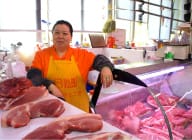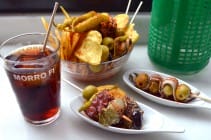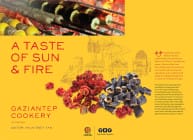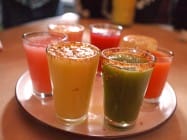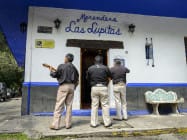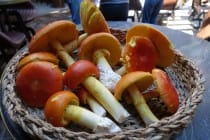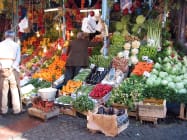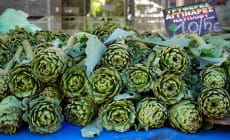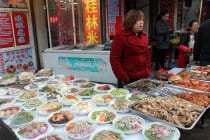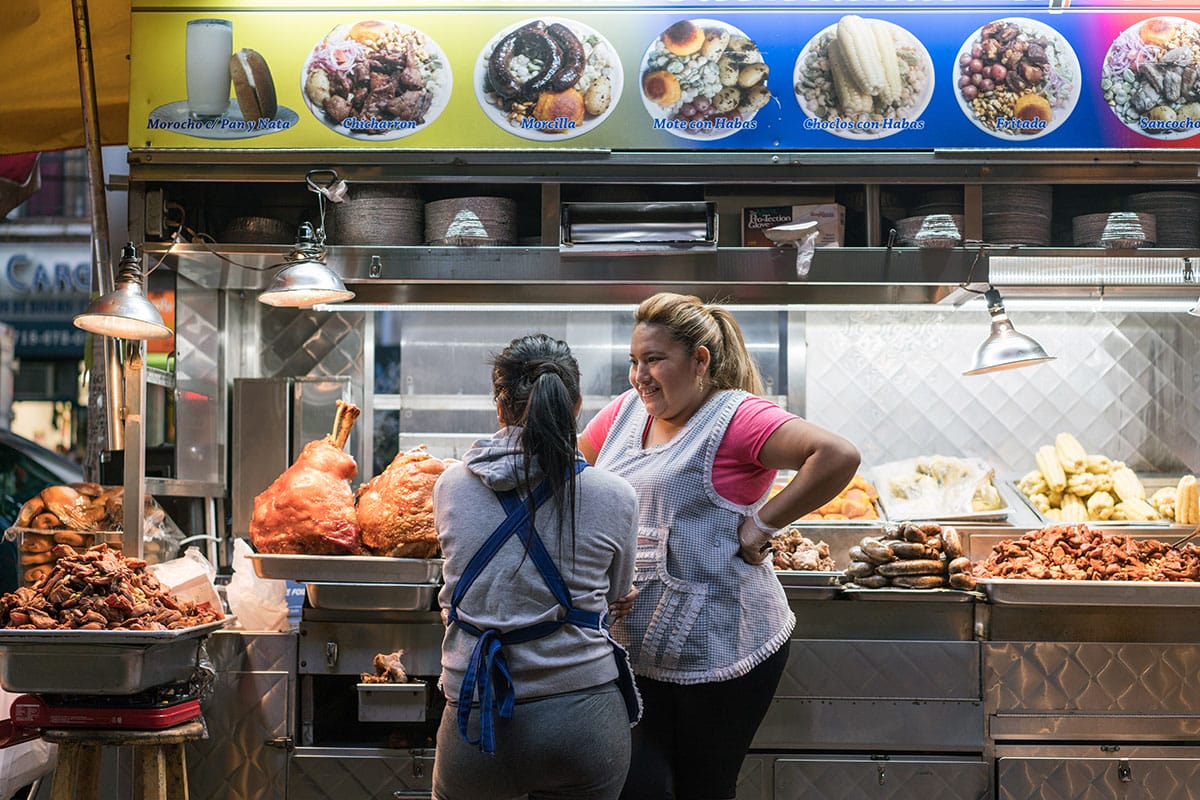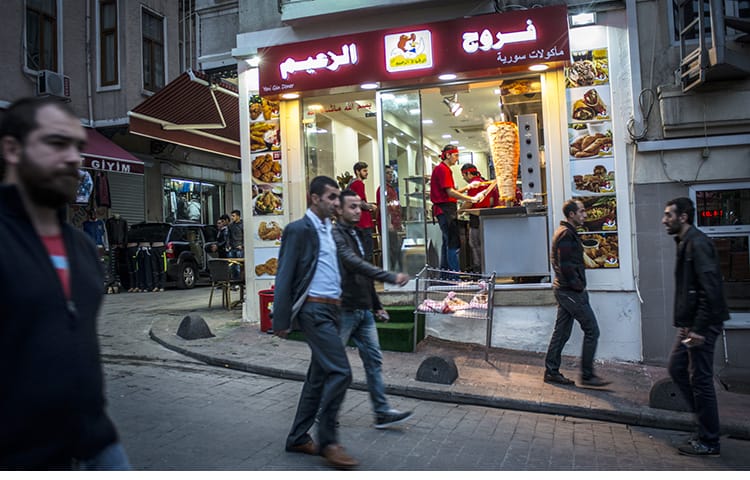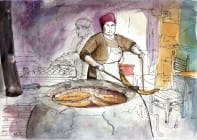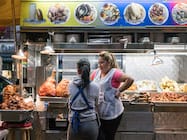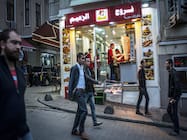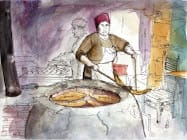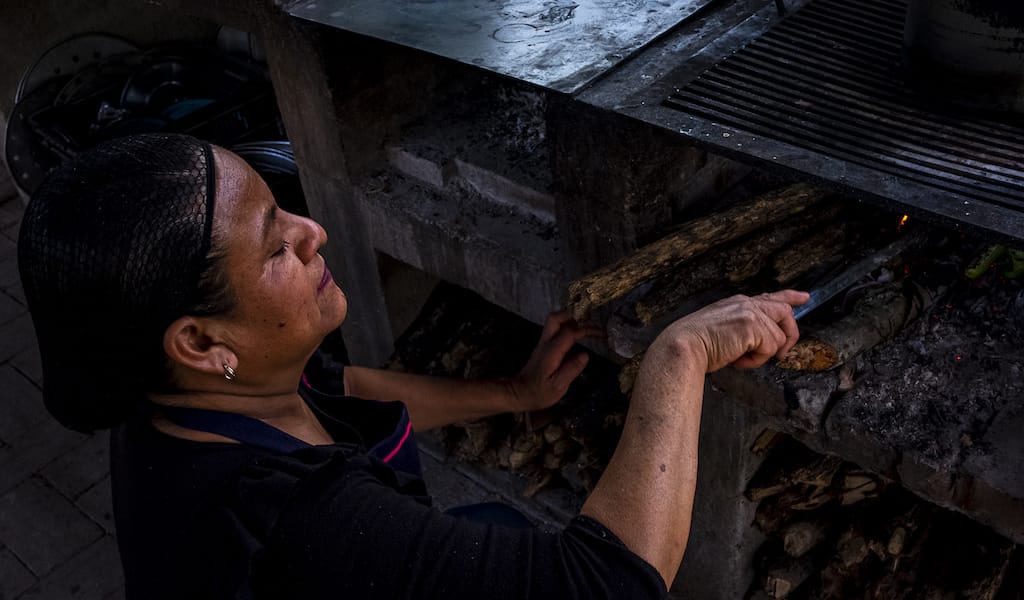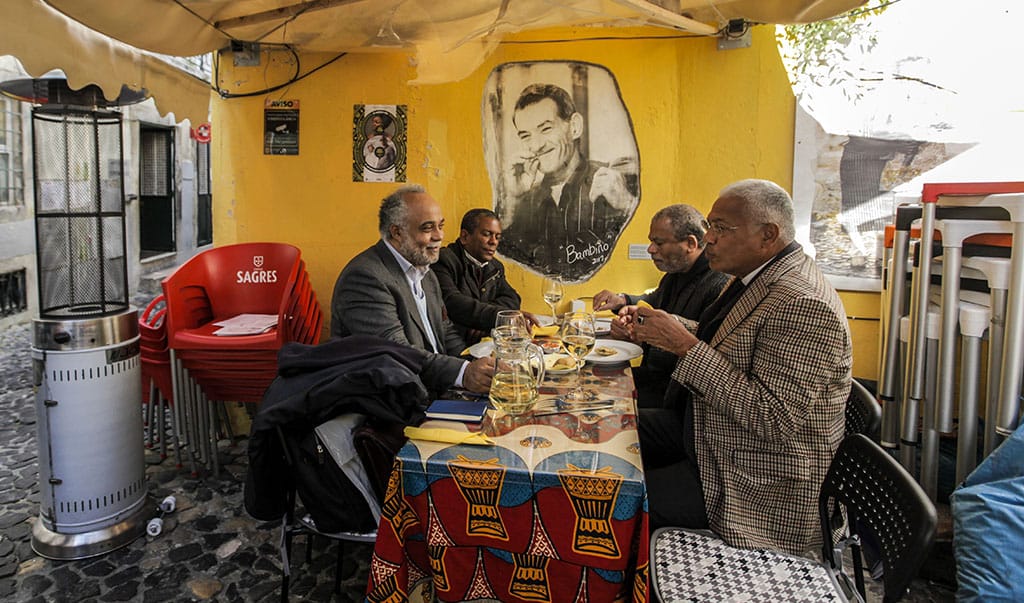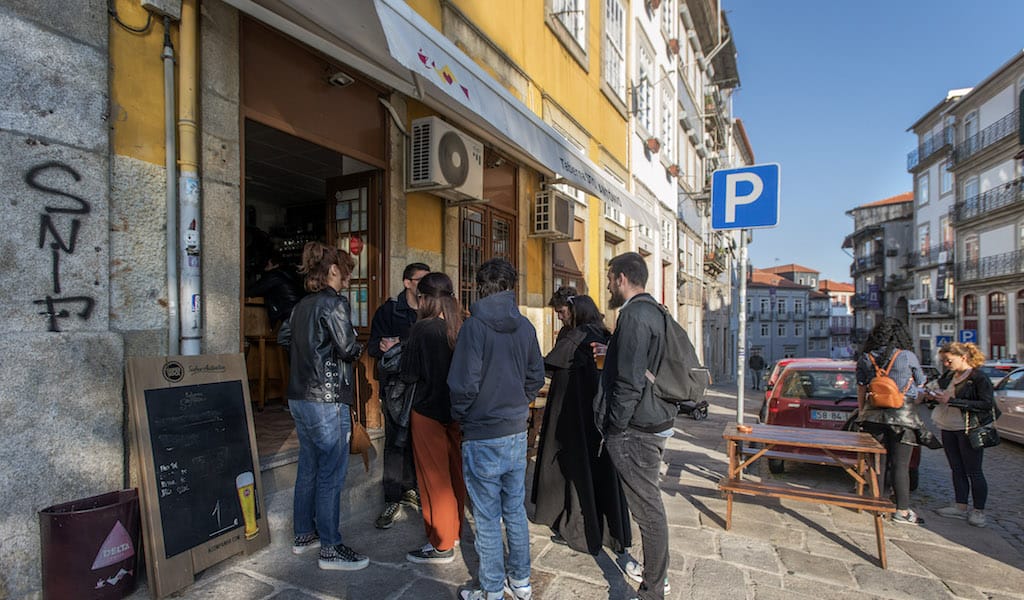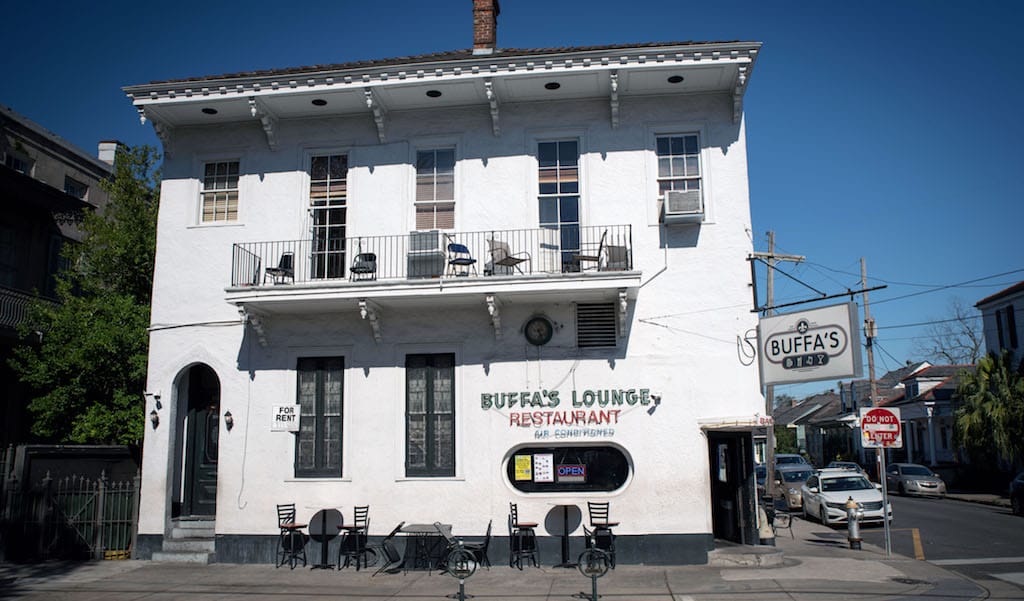Surrounded by a vast garden, Almú sits just outside San Martín Tilcajete, a village about half an hour from Oaxaca City. The open-air restaurant is filled with secondhand furniture and smoke from the wood used for cooking. Almú is bordered on one side by fields and, on the other side, by a forest of copal trees.
The wood from this tree, native to the Oaxacan Central Valleys region, is used to make alebrijes – brightly colored wooden sculptures of fantasy creatures, and a traditional craft for which San Martín is famous. The Mexican folk art was born back in 1936 when an artist from Mexico City, Pedro Linares, fell ill. In an unconscious state, he saw rare animals in his dreams which became inspiration for these handmade, dream-like animals. Copal wood is believed to be magical, too. In 2010, when local artisans Jacobo and María Ángeles realized that the copal wood was being overused, they took it upon themselves to replant thousands of trees. They opened a nursery in the space where Almú now stands, as part of their reforestation project called Palo Que Habla (“Speaking Stick”), which they continue to this day.
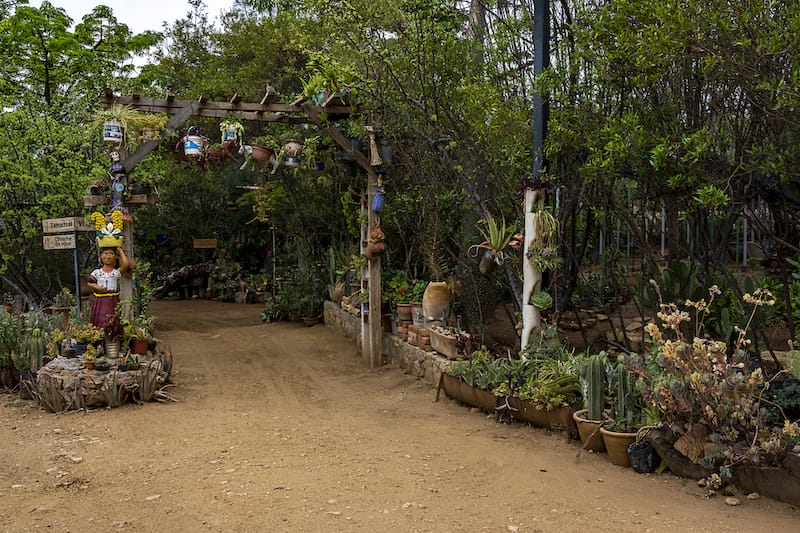
Jacobo and María are perhaps the most well-known artisans in San Martín. These days, their alebrije workshop employs more than 200 people. The family also has other projects, including various restaurants in the village and in Oaxaca City. The story of all of these restaurants, however, including Almú, started with the alebrijes.
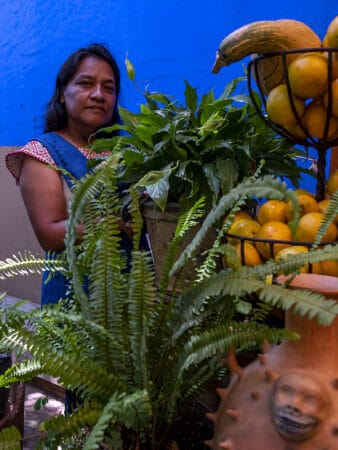
“Thirty years ago, when we became a couple, making alebrijes was not that famous. We decided, however, to continue doing it. We did not want our alebrijes to be [only] souvenirs but pieces of art,” María remembers. Little by little, word spread about their alebrijes. When groups of tourists from the U.S. started coming to San Martín to visit the workshop, they often asked if María could prepare food for them, too. There was no restaurant in the village back then. María always liked cooking – she had learned from her mother, a traditional cook in San Martín, who used to cook for weddings and other community celebrations. María began preparing food for visitors and tourist groups until it became unsustainable for her alone, and the family opened up their first restaurant, La Azucena Zapoteca, on the main road of Tilcajete, which still receives hungry tourists.
Followed by the success of the restaurant, Almú is the family’s newest project, run by Jacobo and María’s son, Ricardo Ángeles Mendóza (28). The name comes from an Arabic word, al-múdd
used for a unit of measurement of volume used in Spain and parts of the world that were colonized by Spain.
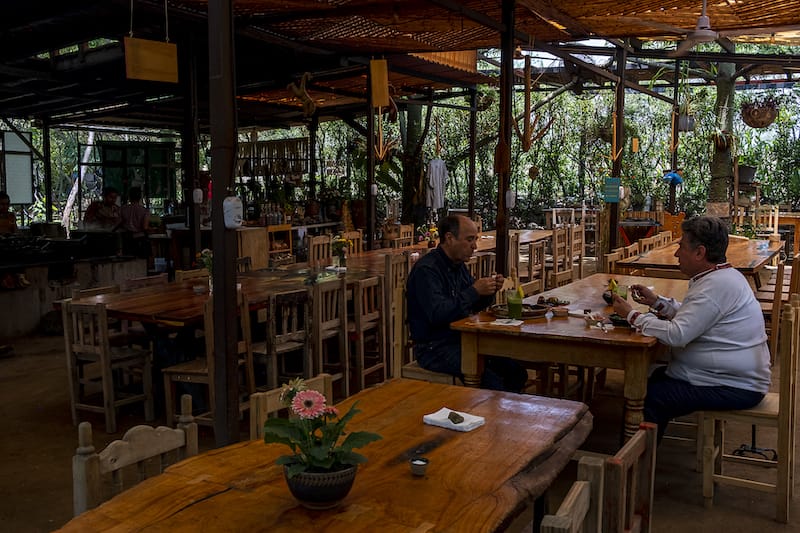
Ricardo is a visual artist and thus it is not surprising that the concept for the restaurant was meant as something of a performance. He was bothered by the way food culture is evolving in Mexico: “They want us to eat fast food, to dress in fast-fashion, music is fast. Everything is very fast. Lifestyle becomes fast,” he explains. “Then someone from the city arrives in a place like Almú, sits down and wonders why waiters are taking so long, why the kitchen is smoky…” His objective was to share authentic village life with visitors to San Martín.
“I wanted to make people feel a bit uncomfortable so that they realize that, in reality, it is not uncomfortable. That is why there is no floor, but dirt. People wait a while for their food to be served. Cooks and waiters wear no uniforms. I want them to put on the music they normally listen to at home while they cook,” he states. Almú is an act of rebellion, a statement in Mexico’s changing culinary landscape.
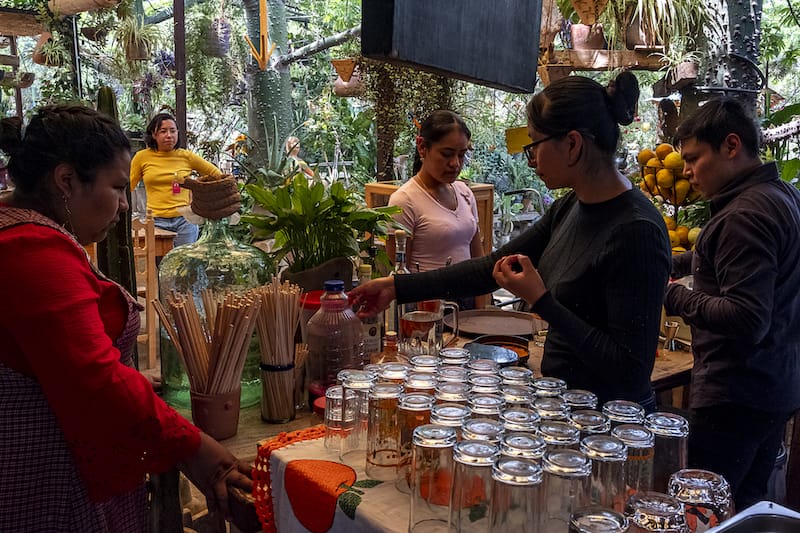
The open kitchen with a wood-burning stove to heat pots and comales – traditional clay plates – is situated in a beautiful garden of local plants and herbs used in Almú’s dishes and cocktails. The garden is full of life – cicadas call for rain with their loud buzz; lizards hide beneath the rocks. Little nooks with hammock-like swings offer a place to rest. All of Almú’s furniture is recycled, and each wooden table and chair is unique. A young waiter in a soccer T-shirt brings our enchiladas – corn tortillas bathed in a mustard-colored mole estofado and topped with fried egg made on the comal.
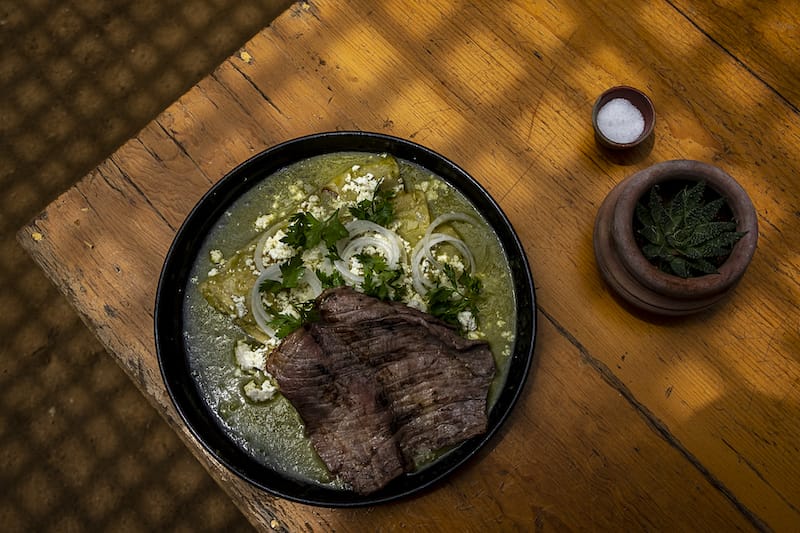
The traditional meal is served on a plate that resembles those you would find in any Oaxacan grandmother’s kitchen. “In the nineties, there was a migration wave from the village towards the U.S.,” Ricardo tells us of the restaurant’s kitchenware. “People got married and, as gifts, they received everything they needed for their homes – [then] they left for years.” Ricardo began collecting these left-behind presents, sometimes still wrapped, and made use of them in Almú. And thus, the restaurant tells a story of migration from San Martín Tilcajete, too – a phenomenon that persists today, the reason often the lack of opportunities. The majority of Almú’s staff is young and comes from surrounding villages. “We opened Almú during the pandemic to provide employment for local people,” Ricardo says.
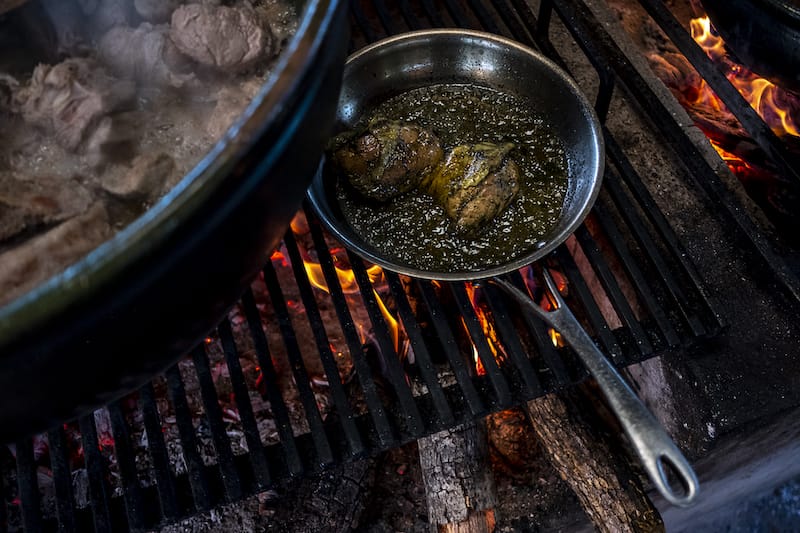
When we ask what the mole estofado is made of, Ricardo says the most important “ingredient” is actually the wood that everything is cooked over, giving the food its traditional, smoky taste. The head of the kitchen, Teresa de Jesús Reyes Martínez (27), shares several of the other ingredients: various kinds of tomatoes, cinnamon, chocolate, sesame seeds, almonds, herbs. Everything is toasted on the comal, one ingredient after another; never together. After that, everything is blended together and cooked into a paste. Mole is on the menu daily, as are classic local meals prepared with tortillas, such as tlayudas, quesadillas or memelitas.
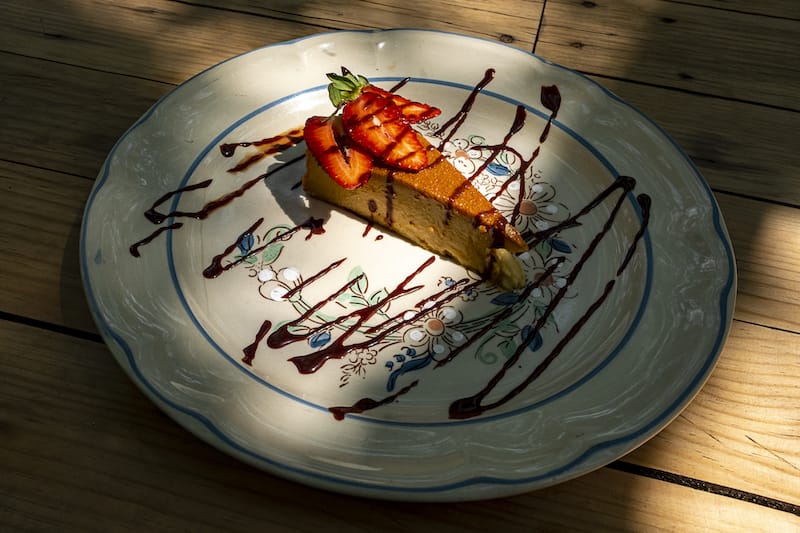
“We also serve small casseroles: vegetables and meat or mushrooms covered with local cheese, quesillo, and cooked under the comal as if it was an oven,” explains Teresa de Jesús. Each day, there is also a special meal on the menu, depending on the season or events and festivals. The day we visited, chicken soup is served. On another day, it is pork ribs in spicy green sauce. The desserts are more contemporary, Ricardo says, such as flan, strawberries with cream, or fried empanadas filled with rice and sweet milk with herbs – crunchy on the outside with a delightfully surprising flavor on the inside.
Many of the recipes are inspired by Ricardo’s grandmothers. The food is made with fresh ingredients, mostly grown by the Ángeles themselves – they continue putting effort into agriculture even through all their projects in other fields. Aguas frescas and cocktails with herbs are some of the menu’s must-try items.
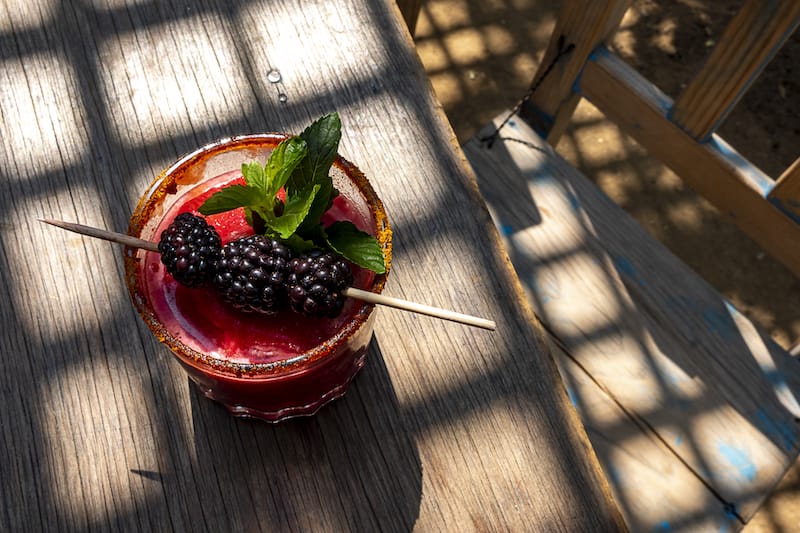
“We use plants like lavender, pennyroyal, and other herbs that are in season. All cocktails are prepared with local mezcal however, for each cocktail, I choose mezcal from different agave,” says barista José Eduardo Alonso Hernández (26). He serves the cocktails with salt with worms around the top of the glass. His favourite one is the one that Almú is about to introduce: encanto herbal. “It combines citrusy juices, rosemary, peppermint, and basil. It is very herbal and fresh,” José says.
“I would like to see Almú inside a museum,” Ricardo laughs, when asked about the future of the restaurant. “So that it dirties all those white walls!” Such was his idea at the outset of the project. For now, though, Almú is a place that contributes to the livelihood of San Martín and surrounding villages, and a place that creates a feeling of community for those who come here to eat.
Magdalena RojoNoel Rojo
Published on July 14, 2023
Related stories
August 25, 2017
LisbonLisbon’s communities from Portugal’s former colonies provide the strongest link to the country’s past, when it was the hub of a trading empire that connected Macau in the east to Rio de Janeiro in the west. Though integral elements of Lisbon life, these communities can sometimes be an invisible presence in their adopted land, pushed…
Dine at Porto’s local institutions on our culinary walk!
April 9, 2019
Porto | By Cláudia Brandão
PortoWe arrived at Taberna Santo António after lunch, looking for a bit of warmth in the middle of winter. It wasn’t a shot in the dark – we already knew that we would be enveloped by a comforting hospitality at this classic Porto spot. The sun was shining, so we sat on the terrace with…
June 27, 2023
New Orleans | By James Cullen
New OrleansWe all have that friend. A friend we should probably call more often. One who is always there for us, but we don’t see often enough. A friend who we can pick up where we left off with, no matter how much time has elapsed between conversations. A friend whose company always leaves you satisfied…
















